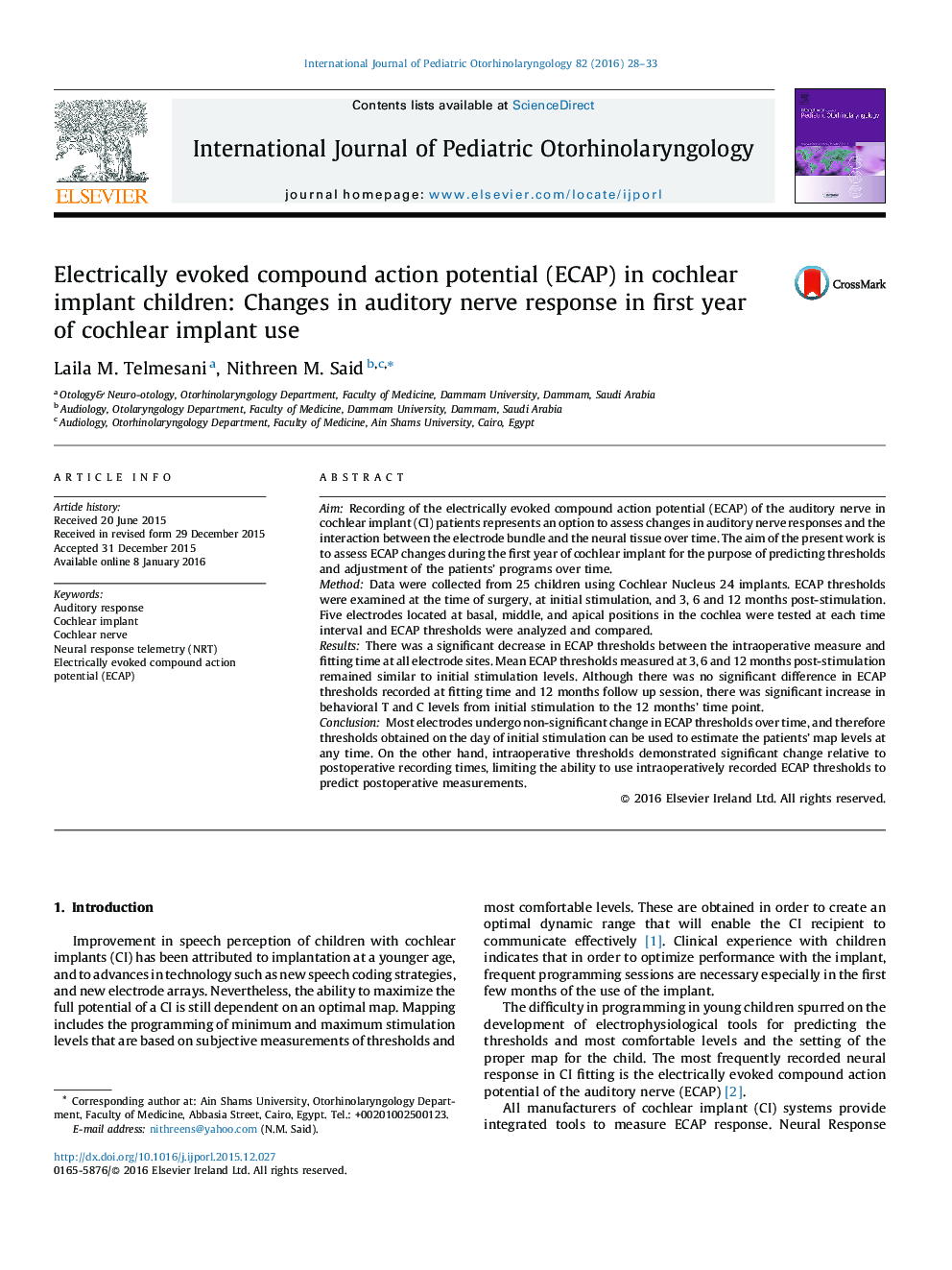| کد مقاله | کد نشریه | سال انتشار | مقاله انگلیسی | نسخه تمام متن |
|---|---|---|---|---|
| 4111356 | 1605986 | 2016 | 6 صفحه PDF | دانلود رایگان |

AimRecording of the electrically evoked compound action potential (ECAP) of the auditory nerve in cochlear implant (CI) patients represents an option to assess changes in auditory nerve responses and the interaction between the electrode bundle and the neural tissue over time. The aim of the present work is to assess ECAP changes during the first year of cochlear implant for the purpose of predicting thresholds and adjustment of the patients’ programs over time.MethodData were collected from 25 children using Cochlear Nucleus 24 implants. ECAP thresholds were examined at the time of surgery, at initial stimulation, and 3, 6 and 12 months post-stimulation. Five electrodes located at basal, middle, and apical positions in the cochlea were tested at each time interval and ECAP thresholds were analyzed and compared.ResultsThere was a significant decrease in ECAP thresholds between the intraoperative measure and fitting time at all electrode sites. Mean ECAP thresholds measured at 3, 6 and 12 months post-stimulation remained similar to initial stimulation levels. Although there was no significant difference in ECAP thresholds recorded at fitting time and 12 months follow up session, there was significant increase in behavioral T and C levels from initial stimulation to the 12 months’ time point.ConclusionMost electrodes undergo non-significant change in ECAP thresholds over time, and therefore thresholds obtained on the day of initial stimulation can be used to estimate the patients’ map levels at any time. On the other hand, intraoperative thresholds demonstrated significant change relative to postoperative recording times, limiting the ability to use intraoperatively recorded ECAP thresholds to predict postoperative measurements.
Journal: International Journal of Pediatric Otorhinolaryngology - Volume 82, March 2016, Pages 28–33